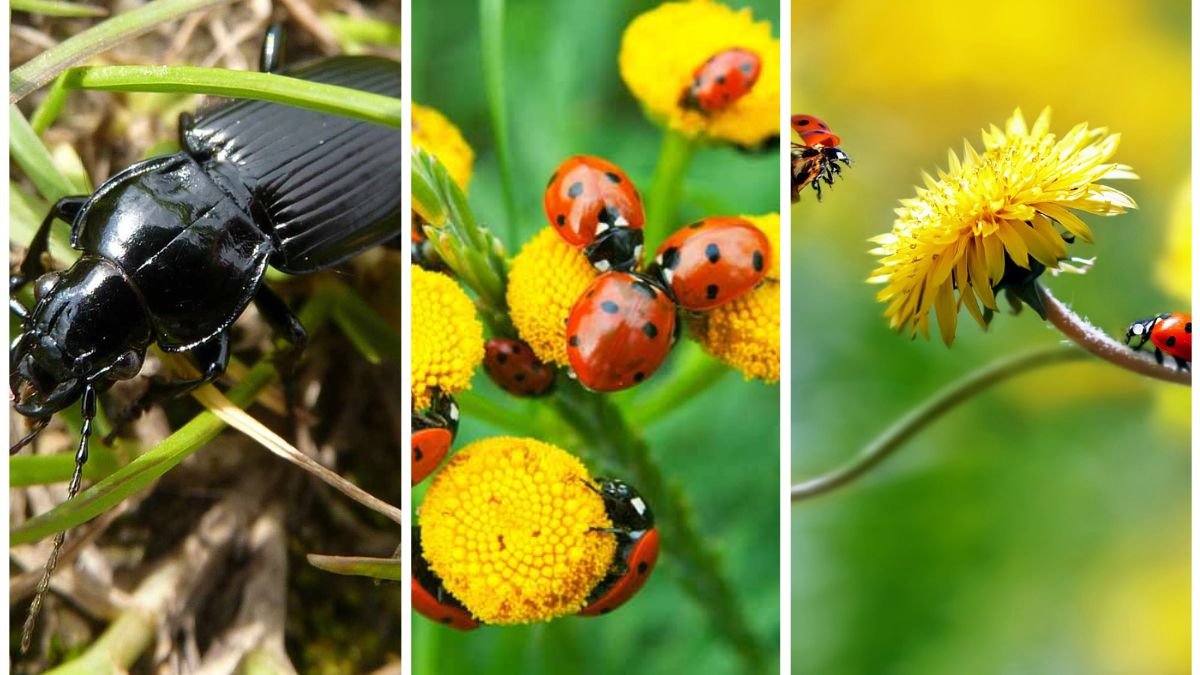When most people think about insects in the garden, they often imagine pests devouring their precious plants or spreading disease. Aphids, caterpillars, and beetles are common culprits that give insects a bad name among gardeners. However, not all insects are harmful. In fact, many species play essential roles in keeping your garden balanced, healthy, and thriving. Some insects act as natural pest controllers, while others help with pollination or soil enrichment.
In this article, we’ll explore six insects that are actually good for your garden, why they matter, and how you can encourage them to take up residence in your outdoor space.
1. Ladybugs – The Aphid Terminators
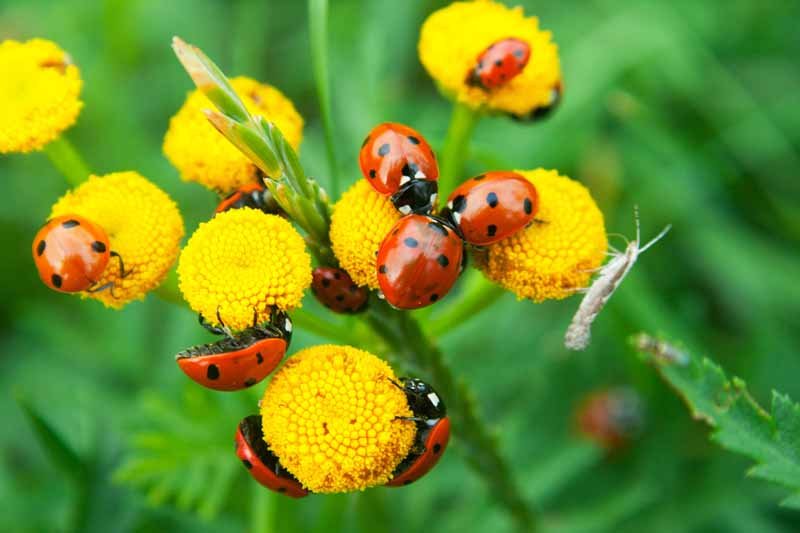
Why They’re Beneficial:
Ladybugs, also known as ladybirds or lady beetles, are perhaps the most well-known beneficial insects in the gardening world. These colorful beetles are voracious predators of aphids, mites, whiteflies, and scale insects—all of which can wreak havoc on your garden plants. A single ladybug can eat up to 50 aphids a day, and their larvae are equally efficient hunters.
How They Help Your Garden:
By keeping aphid populations under control, ladybugs reduce the need for chemical pesticides. This helps maintain a healthier ecosystem and ensures that your flowers and vegetables grow without being drained of nutrients by sap-sucking pests.
How to Attract Them:
- Plant nectar- and pollen-rich flowers like dill, fennel, calendula, and yarrow.
- Avoid using insecticides that kill both harmful and beneficial bugs.
- Provide a shallow water source to keep them hydrated.
2. Bees – The Master Pollinators
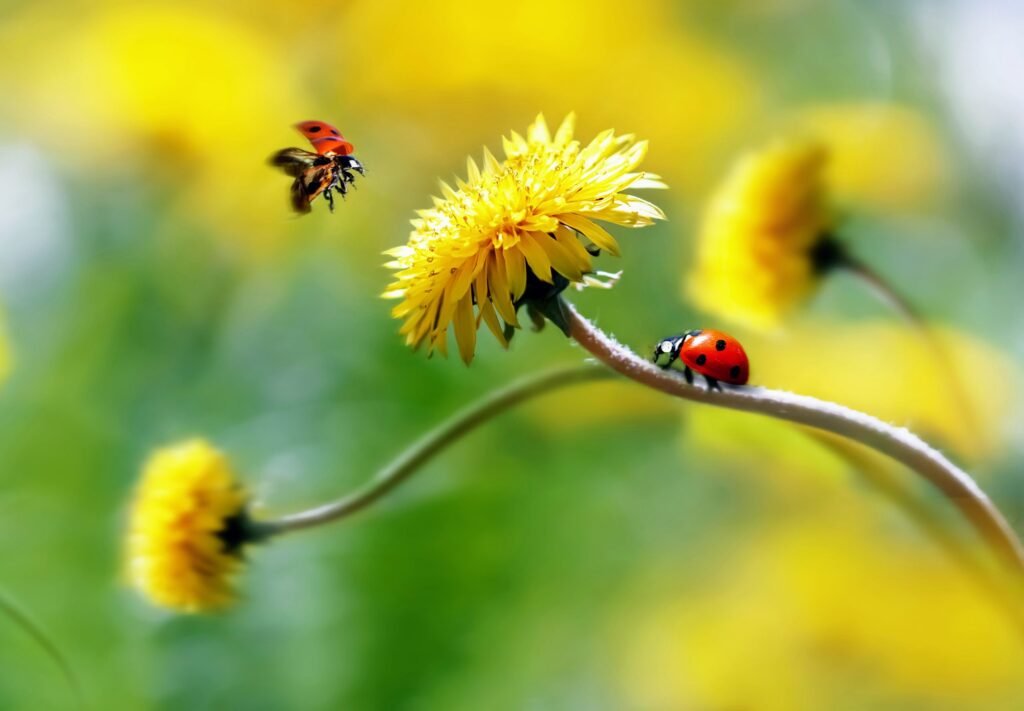
Why They’re Beneficial:
Bees are the backbone of pollination in gardens. Without bees, many of our favorite fruits, vegetables, and flowers wouldn’t exist in abundance. From honeybees to solitary bees like mason bees, these tiny workers transfer pollen from flower to flower, enabling plants to produce seeds and fruits.
How They Help Your Garden:
Pollination by bees leads to better fruit set, improved yields, and healthier plants. For example, tomato plants that are buzz-pollinated by bees produce more robust fruits compared to those pollinated by wind alone.
How to Attract Them:
- Grow a variety of flowering plants that bloom throughout the year.
- Choose native flowers, as bees are naturally adapted to them.
- Provide bee houses or nesting sites for solitary bees.
- Avoid pesticides, especially during blooming seasons.
3. Praying Mantises – The Silent Hunters
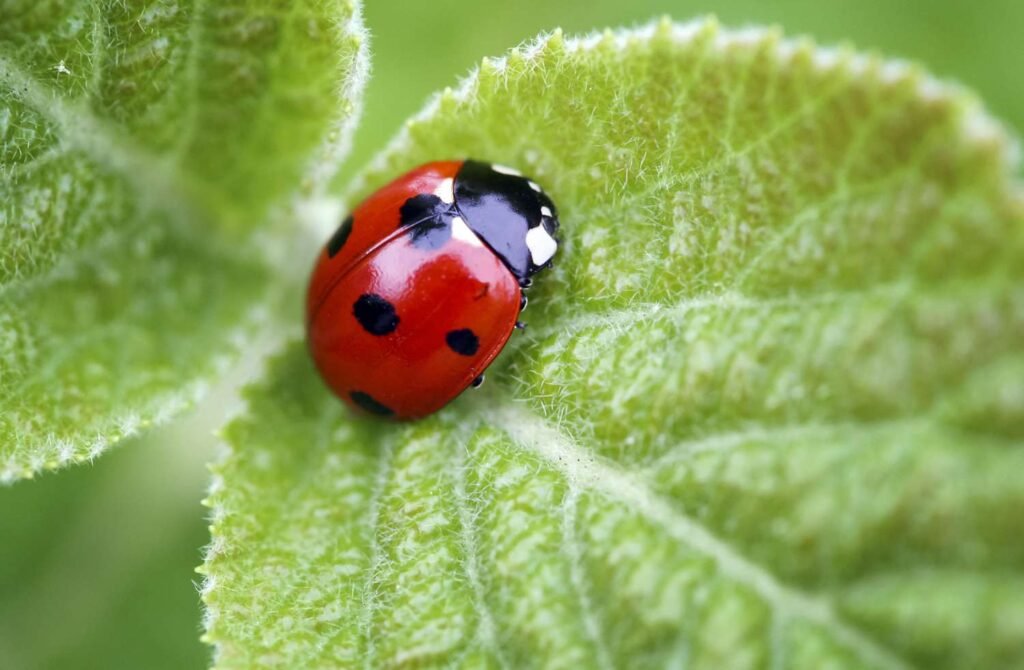
Why They’re Beneficial:
Praying mantises are fascinating insects with their unique “praying” posture and triangular heads. They are formidable predators that feast on a wide variety of garden pests, including moths, flies, crickets, and even grasshoppers. Their quick reflexes and strong forelegs allow them to capture prey with precision.
How They Help Your Garden:
By reducing populations of harmful insects, praying mantises help maintain balance in the garden. They can be particularly helpful in controlling pests that are harder to manage, such as caterpillars and beetles.
How to Attract Them:
- Plant shrubs, tall grasses, and flowers to create hiding and hunting spaces.
- Place mantis egg cases (available from garden supply stores) in your garden.
- Avoid spraying broad-spectrum insecticides that harm them.
4. Ground Beetles – The Nighttime Pest Patrol
Why They’re Beneficial:
Ground beetles are often overlooked because they are nocturnal and spend much of their time hidden under mulch, rocks, or leaves. However, these shiny black or metallic beetles are excellent pest controllers. Both adults and larvae feed on slugs, cutworms, caterpillars, and root maggots.
How They Help Your Garden:
Ground beetles act as natural pesticides, keeping the population of soil-dwelling pests under control. They’re especially valuable for protecting vegetable gardens from pests that attack roots and seedlings.
How to Attract Them:
- Leave leaf litter and mulch for shelter.
- Place stones or logs in garden corners for hiding spots.
- Create a pesticide-free environment so they can thrive.
5. Hoverflies – The Pollinators and Pest Fighters
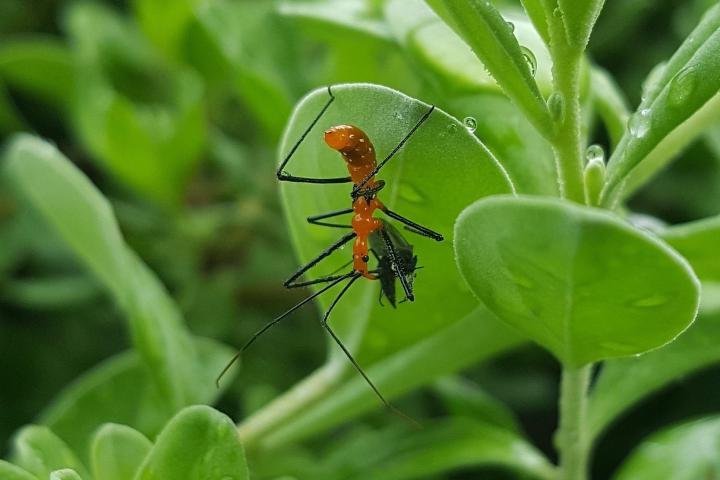
Why They’re Beneficial:
Hoverflies, also known as flower flies or syrphid flies, may look like small bees or wasps, but they are harmless and highly beneficial. Their larvae feed on aphids, thrips, and other soft-bodied pests, while adults are excellent pollinators.
How They Help Your Garden:
Hoverflies provide double benefits: pest control and pollination. Their larvae can consume hundreds of aphids during their short development period, and their pollination helps boost fruit and flower yields.
How to Attract Them:
- Plant flowers like marigolds, alyssum, cosmos, and daisies.
- Provide shallow water dishes with pebbles for resting.
- Maintain diverse flowering plants for continuous nectar sources.
6. Earthworms – The Soil Engineers

Why They’re Beneficial:
While not insects in the strict biological sense (they’re annelids), earthworms are often included in discussions about garden-friendly “bugs.” These underground dwellers play a critical role in soil health. By tunneling through the soil, they improve aeration, water infiltration, and root growth.
How They Help Your Garden:
Earthworms recycle organic matter by breaking down dead leaves and plant material into nutrient-rich castings, which serve as natural fertilizer. Healthy earthworm populations are a sign of fertile soil, which leads to stronger, more productive plants.
How to Attract Them:
- Add organic matter like compost and leaf litter to your soil.
- Keep soil moist but not waterlogged.
- Avoid over-tilling, which can harm their tunnels and habitats.
Why Encouraging Beneficial Insects Matters
Relying on beneficial insects helps gardeners reduce dependence on chemical fertilizers and pesticides. A balanced ecosystem means fewer pest outbreaks, healthier soil, and more pollinators for your flowers and crops. Encouraging these insects is not only environmentally friendly but also cost-effective in the long run.
By understanding which insects help your garden and creating habitats for them, you’re essentially building a self-sustaining, resilient ecosystem right in your backyard.
Tips for Creating a Bug-Friendly Garden
If you want to invite these beneficial insects into your space, here are some general practices to follow:
- Grow a Diversity of Plants: Include a mix of flowering herbs, shrubs, and vegetables to provide food and shelter.
- Use Companion Planting: Some plants naturally repel pests and attract beneficial insects at the same time.
- Provide Water Sources: Even small dishes with pebbles can help insects stay hydrated.
- Reduce or Eliminate Pesticides: Chemicals often kill both pests and beneficial species.
- Maintain Shelter Areas: Keep mulch, leaf litter, or native grasses where insects can hide and reproduce.
Conclusion
Not all insects are foes in the garden. Many play crucial roles in pollination, pest control, and soil improvement. By welcoming ladybugs, bees, praying mantises, ground beetles, hoverflies, and earthworms, you can transform your garden into a thriving, balanced ecosystem. Instead of waging war on all insects, gardeners should learn to distinguish between the harmful and the helpful. With a little effort, you can attract these natural allies and enjoy healthier plants, higher yields, and a more vibrant outdoor space.
In short, a garden without insects isn’t just incomplete—it’s unsustainable. So next time you spot a ladybug on your rose bush or a bee buzzing around your vegetable patch, remember: they’re working for you.
